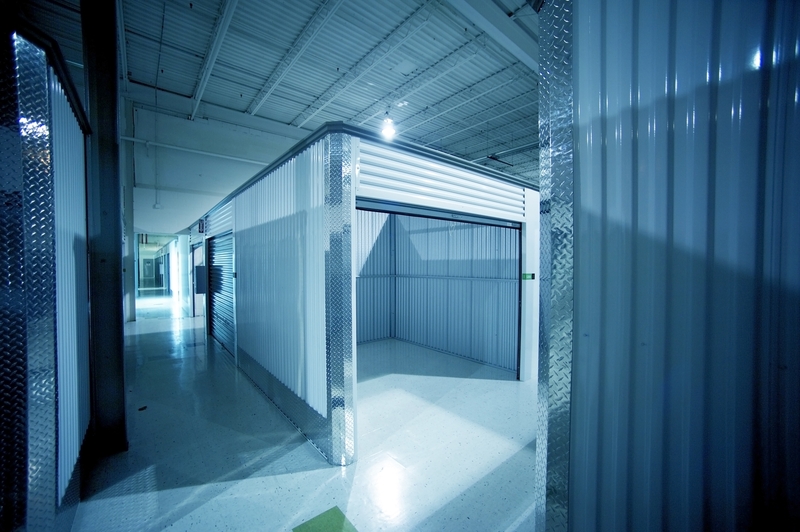DIY or Professional? The Best Approach to Moving a Piano
Posted on 19/05/2025
DIY or Professional? The Best Approach to Moving a Piano
Pianos are prized possessions, often considered both valuable investments and treasured family heirlooms. Whether you're relocating to a new home, rearranging your interiors, or giving your beloved instrument for repair, the question arises: should you move your piano yourself, or hire professional movers? This comprehensive guide explores the complexities of piano relocation, weighing the pros and cons of DIY piano moving versus hiring professional piano movers. We'll cover safety, costs, required equipment, and essential tips for both approaches to help you make an informed decision.

Understanding the Challenge of Piano Moving
Pianos are delicate, intricate instruments that are also substantially heavy and awkwardly shaped. A typical upright piano can weigh between 300 and 600 pounds, while grand pianos may tip the scales at over 1,200 pounds! But it's not just about weight--moving a piano requires attention to:
- Fragile internal components (strings, hammers, soundboard)
- Delicate finishes prone to scratching or denting
- Uneven weight distribution which makes pianos difficult to balance
- Awkward dimensions complicating navigation through doorways and stairs
- Potential safety risks to both movers and property
Given these challenges, the choice between a do-it-yourself piano move and engaging a professional piano moving service is not to be taken lightly.
The Case for DIY Piano Moving
Why consider moving your piano yourself? For some, DIY piano relocation represents a way to save money, or perhaps you have access to strong friends and a moving vehicle. Let's explore what's involved in a successful self-move and the potential pitfalls you should anticipate.
Advantages of DIY Piano Moving
- Cost savings: The most significant allure is financial--you avoid service fees charged by professional movers.
- Convenience of timing: Move your instrument on your own schedule rather than booking ahead with a moving company.
- Hands-on control: You can supervise every aspect, potentially easing concerns about damage or mishandling.
Challenges and Risks of DIY Piano Moves
- Physical hazards: Even with help, moving several hundred pounds invites the risk of back injuries or worse.
- Damage to property: Walls, floors, and stairs are at risk of scrapes, dents, and gouges.
- Instrument damage: Pianos can be knocked out of tune, or suffer far worse--broken legs, pedals, or internal parts--if improperly handled.
- Lack of insurance: DIY moves lack the coverage offered by insured professionals. If your instrument is damaged, repairs or replacement are out-of-pocket expenses.
Essential Gear for Moving a Piano Yourself
- Piano dolly: A heavy-duty, four-wheel dolly specifically designed for piano moving
- Padded moving blankets: To protect surfaces from nicks and scratches
- Straps: High-quality moving straps keep the piano secure during lifting and transit
- Work gloves: For better grip and hand protection
- Ramp: Essential if loading into a vehicle, or moving over steps
- Measuring tape: To ensure the piano fits through doors, hallways, and tight spaces
- Disassembly tools: Screwdrivers and wrenches may be needed for removing piano legs, pedals, or lids (especially for grand pianos)
Step-by-Step Guide for DIY Piano Moving
- Measure all spaces the piano must pass through, including doorways and stairwells.
- Plan the path, removing obstacles like rugs or furniture. Lay protective covers along the route.
- Secure the lid and pedals: Use blankets and tape to prevent them from shifting.
- Lifting: With several helpers (at least three for uprights, more for grands), carefully lift the piano onto the dolly using proper techniques--keep the piano upright to avoid damaging the structure.
- Transport with caution: Move slowly, especially through narrow or sloped areas.
- Loading into a vehicle: Utilize a ramp, and ensure the piano is adequately strapped down to prevent shifting during transit.
- Unloading and positioning: Use the same care at your destination, and promptly tune the piano after it has acclimated to its new environment.
Warning: If your move includes multiple flights of stairs, sharp turns, or tight doorways, reconsider the DIY option, as the risk increases significantly.
The Benefits of Hiring Professional Piano Movers
Why choose the pros? For many, the expertise, peace of mind, and precision offered by specialized piano moving companies far outweigh any cost savings achieved by doing it yourself. Here's why:
Comprehensive Professional Services
- Expertise: Seasoned movers know the nuances of piano construction and how to handle each type safely (upright, concert grand, baby grand, spinet, etc.).
- Specialized equipment: Professional piano movers bring the right dollies, skid boards, ramps, and moving trucks equipped for large, sensitive instruments.
- Insurance: Reputable moving companies are insured, so your piano (often worth thousands of dollars) is protected in the event of damage during transport.
- Efficiency: Movers work quickly and efficiently, with a systematic approach to disassembly, wrapping, loading, and reassembly at your new location.
- Extra services: Some companies offer climate-controlled trucks, storage, or even arrange post-move tuning services.
The Professional Piano Moving Process
- Assessment: Movers inspect your piano, the residence, and moving route to plan for obstacles or challenges.
- Preparation: The instrument is carefully wrapped and safeguarded against bumps and scrapes.
- Disassembly (if needed): Grand pianos may require legs and pedals to be removed for safe transport.
- Loading and securing: Using team coordination and dedicated equipment, the piano is lifted, transported, and securely positioned in the moving vehicle.
- Unloading and reassembly: At the destination, movers set up the piano, reattach components, and position it as you desire, minimizing the risk of floor or wall damage.
When Is Hiring Professionals Recommended?
While any piano move could benefit from expert help, you should especially consider professional moving if:
- You own a grand or baby grand piano
- The piano must be navigated through stairs, elevators, or tight passageways
- Your instrument is antique, rare, or highly valuable
- You want to ensure full insurance and peace of mind
- Time, physical strength, or experience are limited
Comparing Costs: DIY Piano Move vs Professional Movers
DIY Piano Move Expenses
- Rental of moving dolly: $20-$50
- Moving blankets and straps: $10-$40
- Truck/van rental (if needed): $50-$120+
- Possible repair costs (if the move goes wrong): $100-$thousands
- Your time and the cost of accidental injury: priceless
Professional Piano Moving Costs
- Local upright piano move: $150-$400
- Local grand piano move: $300-$600+
- Long-distance or complex moves: Starts at $500; can exceed $1000 for specialty jobs
While professional services seem steeper, the costs factor in labor, experience, equipment, and--most importantly--the insurance and assurance against disaster or damage to a highly valuable piece.
Making Your Decision: Factors to Consider
As you weigh DIY piano moving against hiring professional piano movers, consider the following:
- Piano Type: Uprights are easier to move than grands. The larger and heavier the piano, the more advisable it is to call an expert.
- Distance: Local moves are less risky than long-distance hauls, but every move presents unique challenges.
- Accessibility: Stairs, sharp corners, and narrow doorways dramatically increase risks.
- Available Assistance: Can you recruit several able-bodied, knowledgeable helpers?
- Budget: Are you truly saving after renting gear, vehicles, possible repairs, and the effort required?
- Insurance: Can you afford to lose your piano to an accident? Professional services offer a safety net.
- Peace of Mind: Sometimes, hiring professionals is simply less stressful.
Tips for a Safe and Successful Piano Move
- Always keep the piano upright: Never tilt or lay the instrument on its side, as this can irreparably damage internal components.
- Protect floors and walls: Use pads or runners to avoid dents and scrapes in both the original and destination spaces.
- Clear the path: Ensure hallways and staircases are free from all tripping hazards or obstructions before starting.
- Seek enough help: Never attempt a piano move with fewer than 3-4 strong, capable people for an upright, or more for a grand.
- Tune after moving: Allow your piano to adjust for a week in its new spot, then schedule a professional tuning.

Frequently Asked Questions About Moving Pianos
Can I move an upright piano upstairs without professionals?
While possible with enough help and the right gear, moving an upright piano upstairs is extremely risky. The effort can easily result in property damage or physical injury, so hiring experienced movers is strongly advised.
Is moving a baby grand more complicated than an upright?
Yes. Grand and baby grand pianos require disassembly--legs, lid, and pedals often need removal--special crating, and reassembly. The instrument's size, weight, and delicacy make professional movers almost essential.
What should I do to prepare my piano for moving?
- Remove all items from the piano (decorations, music books, lamps, etc.)
- Lock the keyboard lid or tape it shut
- Wrap the piano with heavily padded blankets and secure with tape or straps
- Disassemble removable parts if necessary (leave this to professionals for grands if unsure)
- Communicate to your movers about stairs, tight corners, or low ceilings
Will my piano need tuning after the move?
Absolutely. Even a careful move can alter the tension of strings, and changes in humidity and temperature will impact tuning. Wait about a week after relocation before hiring a piano technician for adjustments.
Conclusion: The Best Approach to Moving a Piano
Ultimately, whether you choose DIY piano moving or opt for professional piano movers depends on your instrument, the complexities of your move, your budget, and your tolerance for risk. Moving a piano is not like moving furniture--its sheer weight, odd shape, and fragile inner workings demand careful planning, the right tools, and a lot of muscle or expertise.
If the move is minor, your piano is light, and you have reliable, experienced help plus the correct equipment, a DIY move may be practical. For heavier, more valuable, or awkward piano types (and especially for any move involving stairs or tricky spaces), professional movers are the safest, most reliable choice. Don't put your cherished musical investment at risk--make the decision that ensures it keeps providing beautiful music for years to come.
Still not sure? Speak to a reputable piano moving company for a free consultation--many offer quotes based on your piano model and moving scenario, giving you peace of mind no matter which approach you choose.



